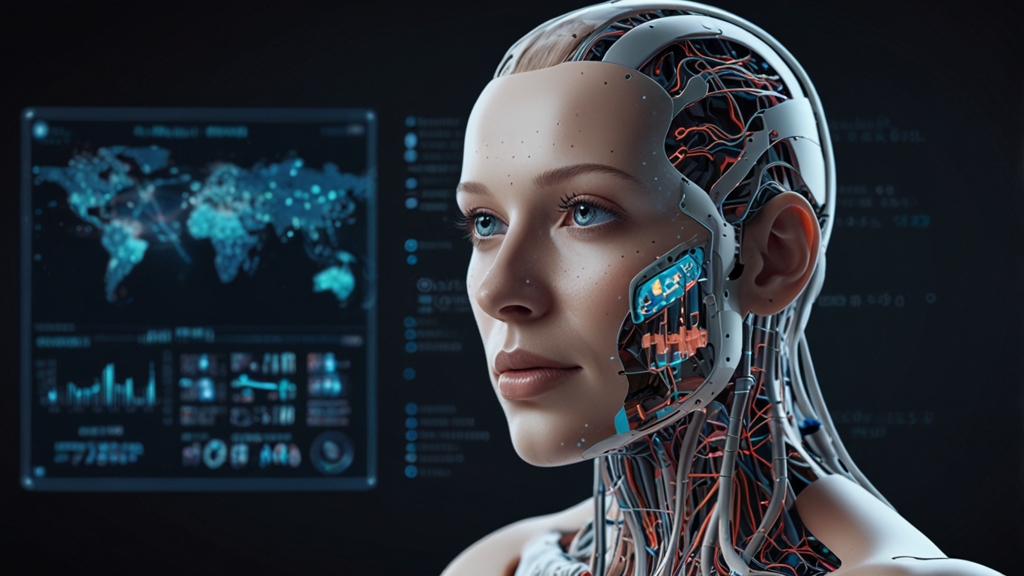5 Powerful Insights into Machine Learning and Deep Learning
Introduction
Artificial Intelligence (AI) is now a core part of contemporary technology that makes machines emulate thought processes previously believed to be unique to humans. In AI, two prominent subfields emerge—Machine Learning (ML) and Deep Learning (DL). Though both are crucial to AI frameworks, they have differences in approach, design, uses, and efficacy. Comprehending the differences between them is essential for organizations, researchers, and tech-savvy individuals who want to deploy AI solutions optimally. This article presents an in-depth study of Machine Learning and Deep Learning, highlighting their core concepts, differences, pros, cons, and practical applications.

Understanding Machine Learning
IT (ML) is a branch of AI that aims to create algorithms that can learn from and make predictions on data. Rather than being directly programmed to execute a particular task, ML models apply statistical methods to identify patterns in data and make decisions based on data.
Major Features of Machine Learning:
- Feature Engineering: Needs domain knowledge to handpick and extract features from raw data.
- Types of Learning: Supervised, unsupervised, and reinforcement learning.
- Data Dependency: Works well with small to medium-sized data.
- Computational Requirements: Can be run on regular CPUs with mid-level hardware requirements.
- Algorithm Examples: Decision Trees, Support Vector Machines (SVM), Random Forests, Naïve Bayes, and K-Nearest Neighbors (KNN).
Types of Machine Learning
- Supervised Learning: Training a model from labeled data where the algorithm is learning to produce known outputs given inputs. Some examples include classification and regression problems.
- Unsupervised Learning: Operates with unlabeled data, seeking underlying patterns and structure in datasets. Some examples include dimensionality reduction and clustering.
- Reinforcement Learning: Operates using an agent interacting with an environment with the aim of maximizing rewards in the long term. Applications involve robotics and game AI.
What is Deep Learning
It(DL) is a sophisticated branch of Machine Learning that utilizes multi-layered neural networks (therefore “deep” learning) to learn features directly from raw input data. Modelled after the brain’s anatomy and operations, DL has transformed image recognition, natural language understanding, and autonomous systems.
Key Features of Deep Learning:
- Neural Networks: Uses artificial neural networks (ANNs), specifically deep neural networks (DNNs), which are comprised of many layers of interconnected neurons.
- Feature Learning: Does away with the requirement for manual feature extraction, as it identifies patterns and hierarchical representations automatically.
- Data Dependency: Needs large-scale data to provide its best performance.
- Computational Requirements: Requires large amounts of computing power, which is often done using Graphics Processing Units (GPUs) or Tensor Processing Units (TPUs).
- Examples of Algorithms: Convolutional Neural Networks (CNNs), Recurrent Neural Networks (RNNs), Long Short-Term Memory (LSTM), Generative Adversarial Networks (GANs), and Transformers.
Categories of Deep Learning Networks:
- Convolutional Neural Networks (CNNs): Image processing and computer vision application-oriented CNNs employ convolutional layers for recognizing spatial patterns.
- Recurrent Neural Networks (RNNs): Well-fitted for the processing of sequential data, i.e., speech recognition and time-series analysis, because they are capable of remembering temporal dependencies.
- Long Short-Term Memory (LSTM): A special kind of RNN that can handle the vanishing gradient issue, thus ideally fit for tasks involving long-span sequences.
- Generative Adversarial Networks (GANs): Composed of two adversary networks (generator and discriminator) that generate extremely realistic synthetic data.
- Transformers: The backbone of contemporary NLP models such as BERT and GPT, transformers facilitate fast processing of sequential data without recourse to recurrence.
Key Differences Between Machine Learning and Deep Learning
| Feature | Machine Learning | Deep Learning |
|---|---|---|
| Data Dependency | Performs well with small to medium datasets | Needs large datasets for best performance |
| Feature Engineering | Needs manual feature selection | Automatically learns features |
| Computational Power | Can be executed on normal CPUs | Requires GPUs/TPUs for quicker execution |
| Interpretability | More explainable and interpretable | Tends to be a black box |
| Training Time | Quicker training time | Takes longer time for training due to complicated structure |
| Applications | Used for structured data analysis | Suitable for unstructured data such as images, audio, and text |
Advantages and Disadvantages
Machine Learning Advantages:
- Suitable for small and organized datasets.
- Quicker training and testing times than it(DL).
- More interpretable outcomes, hence easier to explain model predictions.
Machine Learning Disadvantages:
- Needs a lot of feature engineering, requiring domain knowledge.
- Less efficient in dealing with complex data patterns and unstructured data.
Deep Learning Advantages:
- Better suited for operations involving unstructured data, including image, audio, and text processing.
- Removes the necessity for manual feature engineering, instead learning directly from raw data.
- Can obtain state-of-the-art accuracy on difficult AI tasks.
Deep Learning Weaknesses:
- Needs huge amounts of labeled data to train.
- Computationally costly, requiring specialized hardware such as GPUs and TPUs.
- Tends to lack interpretability, making decision-making processes hard to understand.
Real-World Applications
Machine Learning Applications:
- Fraud Detection: Banks use ML models to identify fraudulent transactions through behavioral patterns.
- Recommendation Systems: Online stores use ML for recommendations according to user choice.
- Healthcare Diagnostics: ML algorithms help diagnose illnesses through structured medical information.
- Stock Market Prediction: Investors and traders use ML models to forecast market trends and price changes.
Deep Learning Applications:
- Image Recognition: DL enables facial recognition, medical image diagnostics, and self-driving vision systems.
- Speech and Natural Language Processing: Siri, Alexa, and Google Assistant employ DL to understand and answer voice commands.
- Autonomous Vehicles: Self-driving vehicles utilize DL models for object detection, decision-making, and route navigation.
- AI-Generated Content: GANs allow for deepfake creation, photorealistic image generation, and AI-generated art.
Conclusion
ML and DL are both part of the evolution of AI, with each having its own strengths and weaknesses. ML is best suited for structured data and interpretable models, while DL is best suited for dealing with intricate patterns in unstructured data. The appropriate approach to use would be based on factors like dataset size, computational power, interpretability requirements, and application demands. With the advancement of AI technology, both ML and DL will continue to revolutionize industries and spur innovation across different fields.
Knowing their distinctions and taking advantage of their special abilities will enable organizations to develop smarter and more effective AI-based solutions.









